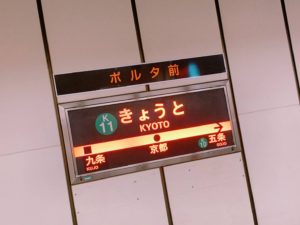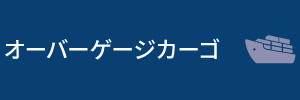HOME > ジャパトラブログ&ニュース
2019年12月26日
京都へ小旅行…(松本)
米発着の海上コンテナ輸送、全世界へのフラットラック・
オープントップコンテナ(オーバーゲージカーゴ)の輸送を得意としているジャパントラストの松本です。
先日社員有志で京都へ日帰り小旅行をしました!
名古屋から京都まで、新幹線で30分。とても近いです
紅葉の時期は過ぎていましたが、まだ落ちていないもみじも少しだけ残っていました。
久々の京都で、情緒のある街並みや趣のある食べ物に癒されました。
みなさまも日常の喧騒に疲れた時は小旅行をされてみてはいかがでしょうか!
・北米発着の海上コンテナ輸送でご相談の方はこちら
投稿者
ジャパントラスト株式会社
松本 愛子
インサイドセールス。 山口県の温泉街出身の射手座です。 好きな食べ物は餃子。 24歳を過ぎたあたりから、増えた体重が戻らないことが今の悩みで、 最近は週1を目標にジムに通っています!
2019年12月25日
コラム/最適物流の科学㊳
最適物流の科学
弊社社長の菅が、2017年12月に『最適物流の科学―舞台は3億6106万平方km。
海を駆け巡る「眠らない仕事」』という書籍を出版しました。
そこで、本ブログでも、その書籍から抜粋した内容を
毎週1話ずつ、ご紹介していきたいと思います。
第三十八回となる今回は、「海運会社の実力がわかる三つのポイント~イレギュラーな事態にはどう対応するか~」というテーマで「情報収集力・発信力」をお話しいたします。
↓
↓
——————————————————————————————————–
「情報収集力・発信力」
小さな情報の積み重ねが役立つ場合もある
「ビジネスの秘訣は、他の誰も知らないことを知ることである」―。
これは「二〇世紀最大の海運王」とも称された、ギリシア人実業家、アリストテレス・オナシスが遺した言葉です。ビジネスにおいて情報が重要であることは、説明するまでもないでしょう。もちろん、その情報が正確であるのは大前提です。ネットを通して虚実織り交ざった情報が氾濫する今日、国際物流業者においても、誤った情報で踊らされることのない冷静な行動が、より強く求められています。
情報を入手する早さも大切です。新聞で報じられたときには、事態はもうすでに次の段階へ移っていたというケースも少なくありません。情報を入手したら迅速に行動することも重要です。情報を持っていても、それを生かさなければ意味がありません。
国際物流において、海外の情報をいち早く入手することは必要不可欠です。国内と異なり、海外へ貨物を送る場合は、その過程が見えにくくなります。たとえば北米であれば、現地の港に到着するまでに一〇日以上という長い時間を要します。ドア・ツー・ドアであればそこからさらに日数がかかります。
円滑に内陸輸送へとバトンタッチできたのか、滞りなく貨物が動いているのか、不安に思われる荷主も少なくありません。特に、途中でトラブルが起きた場合、荷主に対して的確に情報提供ができるかは、事業者の信頼度を測る上で大きな指標となります。第二章5節でも紹介した、二〇一四年から二〇一五年にかけて北米西岸で起きたストライキでは、関係する物流業者に情報の入手・発信が強く求められました。
この件について補足して話を進めます。
ストライキは二〇一四年一一月頃に始まり、以後約半年にわたって続き、世界経済に大きな影響をおよぼしました。当時、西海岸の港では船の沖待ちが頻発するなど、海上輸送は麻痺状態に陥っていました。さらにストライキ中の二〇一五年二月、アメリカ東部を中心とする一帯を大寒波が襲います。この影響で貨物列車が止まるなど、内陸輸送にも大きな影響が出ました。日本からアメリカに向けて貨物を送った荷主は、目的地への到着日がまったく見通せない情況が長く続きました。
ある自動車部品メーカーは、一一月二〇日に日本を出港してアメリカへ向かうコンテナ船に自社の貨物を載せました。当初予定されていた現地工場への到着時期は一二月末。ところがストライキの影響で貨物の動きが滞り、到着が翌年一月末にまでずれ込んでしまいました。約一カ月の遅延です。現地工場では生産ラインが毎日稼働しており、日本から部品が届かなければ在庫は底をついてしまいます。結局この企業は、遅れが許されない部品については、多大なコストをかけて航空便を使うことを余儀なくされました。
アメリカ全土で物流に大混乱を来たす中、弊社は現地の情報を可能な限り入手し、その対応策を含め荷主に向けて提供するように努めました。先に紹介したメキシコ経由でアメリカへ輸送するサービスも、その一環として行なわれました。これとは別に、北米東海岸を使うサービスも提案しました。
当時、荷主がもっとも求めていた情報は、出荷した貨物の状況です。弊社は貨物を一本ずつトレースし、それを日本の荷主へと随時送りました。現地の沖待ち状況を含め、各港のリアルな情報も求められました。これも随時最新情報を入手し、すべての取引先へメールで一斉に送信しました。情報を把握するにあたっては、現地法人と定期的にテレビ会議を実施し、情報の誤りや漏れがないかを確認しました。
ストライキという大きな事態を通して、弊社が取引先からの信頼度を高められたのは不幸中の幸いだったのかもしれません。一連の出来事は、国際物流業者にとって情報がいかに重要であるかを学ぶ機会になりました。
Ability in collecting and posting information.
Stacking of small information can be useful in some cases.
“The secret of business is to know things that no one else knows.”
This is the word by a Greek businessman Aristotle Onassis who was known as “the greatest maritime king in the 20th century.” Needless to explain that information is important in business. Of course, it is a requisite that the information is accurate. Today when all sorts of true and false information overflows in the net, international logistics companies are required to take on calm behaviors so that they will not be swayed by erroneous information.
Your speed in obtaining information is also important. There are also cases where the situation has already been transferred to the next stage when it is first reported in the newspaper. It is also important to act quickly once you get the information. Even if you have particular information, it is meaningless unless you make use of it.
In international logistics, it is essential to obtain oversea information as soon as possible. Unlike domestic transport, if you send cargoes overseas, the shipping process is harder to monitor. For example, to North America, it takes 10 days or more before arriving at a local port. If it is a door – to – door it will take additional days from that point onward. There are not a few shippers who worry about whether the connection to inland transport was smoothly made or whether the cargo is smoothly carried on or not. Especially, if trouble occurs on the way, whether we can provide accurate information for the shipper is a big indicator for measuring trustworthiness of the business operators involved. The strike that occurred in the west coast of North America from 2014 to 2015 and is introduced in Chapter 2, Section 5, was a great lesson where the acquisition and dissemination of the relevant information to the concerned logistics company were definitely needed.
Let me give you some more supplementary stories about this case.
The strike began around November 2014 and continued for about half a year afterwards. It had a major impact on the world economy. At that time, sea transportation was in a state of paralysis. Frequent ship wait at the port of the west coast was very common. In addition, in February 2015 during the strike, the cold wave attacks the area around the eastern United States. As a result of this influence, the cargo train stopped, and so the negative impact on inland transportation was also huge. The shipper had no clue when the cargo from Japan to the US will arrive at the destination and this situation continued for a long time.
An automobile parts maker put its cargo on a container ship departing Japan from January 20th and heading for America. The arrival time to the local factory that was originally planned was the end of December. However, due to the strike, the movement of the cargo was stagnant, its arrival had fallen behind to the end of January the following year. The delay was about a month. In the local factory, the production line is operating everyday and inventory will bottom out unless parts from Japan arrive. Eventually, this company was obliged to use airmail at a great cost for parts that were not allowed to be delayed any more.
While bringing huge disruption to logistics throughout the United States, our company tried to obtain local information as much as possible and provide it for shippers including countermeasures. The service to transport to the USA via Mexico introduced earlier was also done as part of that plan. Apart from this, we also proposed a service using East Coast.
At that time, the shipper’s most requested information was the status of the cargo shipped. We traced the cargoes one by one and sent each cargo’s information to our shippers from time to time. Real information on each harbor including the offshore waiting situation in the local area was requested. We also got the latest information from time to time, and sent it to all our customers all together by e-mail. We regularly held a video conference with the local corporation to check whether there was any information mistake or omission.
Through the incident of the major strike, we were fortunate enough to gain more trust from our customers. These series of events became an opportunity for us as an international logistics company to learn how important information is.
——————————————————————————————————–
つづく。
次回は、「すべての取引先が貴重な情報源」というテーマでお話しいたします。
ご興味を持っていただけた方、続きを一気にご覧になられたい方は、ぜひアマゾンでお求めください♪
最適物流の科学――舞台は3億6106万平方km。海を駆け巡る「眠らない仕事」
https://www.amazon.co.jp/dp/4478084297/
北米向けコンテナ海上輸送(FCL)のエキスパート!詳しくはこちらから。
工作機械・大型貨物・重量物などのフラットラックコンテナ、オープントップコンテナ海上輸送ならおまかせ!詳しくはこちらから。
コンテナのサイズ表はこちらから。
投稿者
ジャパントラスト株式会社
2019年12月18日
コラム/最適物流の科学㊲
最適物流の科学
弊社社長の菅が、2017年12月に『最適物流の科学―舞台は3億6106万平方km。
海を駆け巡る「眠らない仕事」』という書籍を出版しました。
そこで、本ブログでも、その書籍から抜粋した内容を
毎週1話ずつ、ご紹介していきたいと思います。
第三十七回となる今回は、「海運会社の実力がわかる三つのポイント~イレギュラーな事態にはどう対応するか~」というテーマで「国際物流会社の総合力が試される」をお話しいたします。
↓
↓
——————————————————————————————————–
「国際物流会社の総合力が試される」
アンダーデッキのトップストレージは、船の中でもごく限られたスペースです。そのため、この場所を確保するのは容易ではありません。船会社も、オーバーゲージのためにこのスペースを積極的に確保しようとはしません。なぜなら、通常のコンテナを積んだ場合に比べて利益が少なく、リスクもあるからです。
たとえば、フルボイドのオーバーゲージ貨物があった場合、先に述べた通り六つ分のスペースを確保する必要があります。しかし、運賃は基本的にコンテナの数で決まります。オーバーゲージの場合は、コンテナ一つであっても当然通常より高い運賃になりますが、六倍にまではなりません。
船会社からすれば、オーバーゲージ一つよりも、コンテナを六つ積んだ方が、基本的には利益が多くなります。
さらに、オーバーゲージ貨物の中には、特殊な工作機械など製造スケジュールが変わりやすい品物もあります。
そのため、直前に船積みがキャンセルになることも少なくありません。その場合、キャンセル料を取ることはできますが、実際にコンテナを積んだ際に得られる収入に比べれば、その額はわずかです。
こうした厳しい条件の中でスペースを確保する場面においては、事業者の力量が問われます。オーバーゲージ貨物を扱うにあたって、多くの船会社とのネットワーク、信頼関係は必須です。
そのための営業力はもちろん、オーバーゲージ貨物を扱う知識や経験も欠かせません。オーバーゲージ貨物の取扱いは、まさにその国際物流業者の総合力が試される場面といっても過言ではないでしょう。
The international logistics company’s overall ability is tested
The top storage of the under deck is a very limited space in the ship. Therefore, it is not easy to secure this place. The shipping company will not actively secure this space due to the over-gauge issue. This is because there are fewer profits and more risks compared to the case where normal containers are loaded.
For example, if there is a full void over-gauging cargo, it is necessary to secure six spaces as mentioned above. However, the fare is basically determined by the number of containers. In case of over-gauge, even one container will naturally have a higher fare than usual, but it will not be six times larger.
For a shipping company it will be more profitable to have six containers than one over-gauge. In addition, some over-gauge cargoes are subject to change in manufacturing schedules, as seen in the case of special machine tools. Therefore, shipping is often canceled at the last minute. In that case, you can take a cancellation fee, but the amount is small compared to the income obtained when actually loading containers. Under such harsh conditions, the competence of business operators is questioned in terms of securing space. When handling over-gauge cargoes, network and trust with many other shipping companies are essential.
To handle an over-gauge cargo, sales strengths, knowledge and experience are indispensable. It is no exaggeration to say that the handling of over-gauge cargoes is the realm where the comprehensive strength of an international logistics companies is tested.
——————————————————————————————————–
つづく。
次回は、「情報収集力・発信力」というテーマでお話しいたします。
ご興味を持っていただけた方、続きを一気にご覧になられたい方は、ぜひアマゾンでお求めください♪
最適物流の科学――舞台は3億6106万平方km。海を駆け巡る「眠らない仕事」
https://www.amazon.co.jp/dp/4478084297/
北米向けコンテナ海上輸送(FCL)のエキスパート!詳しくはこちらから。
工作機械・大型貨物・重量物などのフラットラックコンテナ、オープントップコンテナ海上輸送ならおまかせ!詳しくはこちらから。
コンテナのサイズ表はこちらから。
投稿者
ジャパントラスト株式会社
2019年12月11日
コラム/最適物流の科学㊱
最適物流の科学
弊社社長の菅が、2017年12月に『最適物流の科学―舞台は3億6106万平方km。
海を駆け巡る「眠らない仕事」』という書籍を出版しました。
そこで、本ブログでも、その書籍から抜粋した内容を
毎週1話ずつ、ご紹介していきたいと思います。
第三十六回となる今回は、「海運会社の実力がわかる三つのポイント~イレギュラーな事態にはどう対応するか~」というテーマで「オーバーゲージ貨物は扱いが難しい」をお話しいたします。
↓
↓
——————————————————————————————————–
「オーバーゲージ貨物は扱いが難しい」
コンテナ船にコンテナを搭載するときは、船倉内かデッキ(甲板)上、いずれかに積み付けられます。
船倉はデッキの下にあるスペースで、船の外からは見えません。ここに搭載されたものは、風雨や高波の影響を受けることはありません。一方、デッキ上では風雨や高波、あるいは太陽熱の影響を受ける可能性があります。
オーバーゲージ貨物は、上面がはみ出すオーバーハイ(Over high)、側面がはみ出すオーバーワイド(Over wide)、上面と側面がはみ出すフルボイド(Full void)の三種類に分けられます。
これらの貨物には、オープン・トップ・コンテナ、フラット・ラック・コンテナなどが使われますが、コンテナの天井や壁が部分的にない構造であるため、デッキ上に搭載した場合、貨物が風雨や高波の影響を受けます。したがって、オーバーゲージ貨物は船倉内に積み付けねばなりません。
船倉内にはセルガイドと呼ばれるレールが設置されており、コンテナの四隅をこれに沿わせることによって、規則正しく、かつ安定した状態で積み上げられます。ここにオーバーゲージ貨物が加わると、この形を保つことができなくなってしまいます。オーバーハイの場合は、上にコンテナ一つ分のスペースが必要になります。オーバーワイドの状態であれば、コンテナの両側を含めた計三つ分のスペースを使います。フルボイドであれば、コンテナの上と左右、さらに左右の上のスペースも占めるため、計六つ分のスペースを使います。当然、これらの上にコンテナを積み上げることはできません。
船倉内で、かつ上にコンテナを積まなくてもよい場所は、スペースの最上部ということになります。このアンダーデッキのトップストレージがオーバーゲージの指定席になるのです。
Overgauge cargo is difficult to handle
In loading a container on a container ship, it is loaded either in the hold or on the deck (deck). The hold is a space under the deck and can not be seen from outside the ship. Those mounted here are not affected by weather and high waves. On the other hand, it may be affected by wind and rain, high waves, or solar heat on the deck.
The over-gauge cargo is divided into three types: Over high which the upper surface protrudes (Over high), Over wide where the side protrudes (Over wide), and Full voids protruding from the top and sides (Full void).
Though these cargoes are contained in the open top container and flat rack container, etc, the cargoes may be affected by wind and rain and high waves if it is mounted on a deck because the structure of the container does not have a ceiling or wall partially. Therefore, the over-gauge cargo must be loaded in the hold. A rail called a cell guide is installed in the hold, and by laying the four corners of the container along this, it is stacked in a regular and stable state. When the over-gauge cargo is added here, it will be impossible to keep this shape. In case of over high, space of one container is required above.
In case of Overwide, we use a total of three spaces, including both sides of the container. In case of Full void, it occupies space above and to the left and right of the container, and also on the left and right, so we use a total of six spaces. Naturally, you can not stack containers on these. The place in the hold and where you do not have to stack containers on top is the top of the space. The top storage of this under deck becomes the designated seat of the over-gauge.
——————————————————————————————————–
つづく。
次回は、「国際物流会社の総合力が試される」というテーマでお話しいたします。
ご興味を持っていただけた方、続きを一気にご覧になられたい方は、ぜひアマゾンでお求めください♪
最適物流の科学――舞台は3億6106万平方km。海を駆け巡る「眠らない仕事」
https://www.amazon.co.jp/dp/4478084297/
北米向けコンテナ海上輸送(FCL)のエキスパート!詳しくはこちらから。
工作機械・大型貨物・重量物などのフラットラックコンテナ、オープントップコンテナ海上輸送ならおまかせ!詳しくはこちらから。
コンテナのサイズ表はこちらから。
投稿者
ジャパントラスト株式会社
2019年12月04日
コラム/最適物流の科学㉟
最適物流の科学
弊社社長の菅が、2017年12月に『最適物流の科学―舞台は3億6106万平方km。
海を駆け巡る「眠らない仕事」』という書籍を出版しました。
そこで、本ブログでも、その書籍から抜粋した内容を
毎週1話ずつ、ご紹介していきたいと思います。
第三十五回となる今回は、「海運会社の実力がわかる三つのポイント~イレギュラーな事態にはどう対応するか~」というテーマで「スペース確保力」をお話しいたします。
↓
↓
——————————————————————————————————–
「スペース確保力」
国際物流業者を選ぶにあたっては、前章で見た三項目が大きな基準となります。おさらいすると①海外拠点の有無②海運業界内でのネットワーク力③中立の立場での顧客第一主義です。しかし、海運会社の実力は、やはり実際に利用してみないとわかりません。中でも、イレギュラーなケースにおいて物流業者がどう対応するかは重要なポイントといえます。通常の依頼は難なくこなしていた会社が、不測の事態に直面すると満足のいく対応ができなくなるケースは珍しくないのです。
本章では、さらに事業者の真価を測る基準について三つの視点から考察し、国際物流業者の内実を探っていきます。
1.スペース確保力
規格化により発展したコンテナ輸送
今日、海上輸送(定期船)の主流となっているのがコンテナ船です。コンテナ船が普及した最大の理由は、国際的に規格化されたコンテナを使用するため、貨物を一度で大量に運べる点にあります。荷役も非常に効率良く行なえるため、在来貨物船に比べリードタイムが大幅に短縮されました。
ただいうまでもなく、すべての貨物がコンテナに収まるというわけではありません。大型の工作機械など、コンテナのサイズを超えた貨物、すなわちオーバーゲージ(Out of gauge)貨物もあります。そうした通常のコンテナには収まらないオーバーゲージ貨物を扱うことができるかどうかは、業者の実力を測る上で注目すべきポイントになります。
では、コンテナ船に積むオーバーゲージ貨物とは具体的にどれくらいの大きさのものを指すのでしょうか。その説明の前に、まずコンテナの規格について確認しておきましょう。
今日、海上輸送で使用されている標準的なコンテナは、長さが二〇フィート(約六m)のものと四〇フィート(約一二m)のものです。いずれも、高さは八フィート六インチ(約二・六m)、幅は八フィート(約二・四m)です。
近年は長さ四五フィート(約一三・七m)のコンテナも登場しています。これらのサイズはISOによって規格化されているので、国境をまたいでもスムーズに輸送することができるのです。
コンテナは、用途や構造によっていくつかに分類されます。もっともよく使われているのがドライ・コンテナです。多品種の貨物輸送に使用され、「コンテナ」といえばこれを指すことが一般的です。
特殊なものとしては、野菜や肉、魚介類など生鮮食料品の輸送に使う冷凍コンテナ(リーファ・コンテナ)、冷蔵コンテナがまず挙げられます。その他穀物などをバラの状態で運ぶバルク・コンテナ、液体を格納して輸送するタンク・コンテナ、衣類を運ぶためのハンガーの付いたガーメント・コンテナなどがあります。
それ以外では、天井部分のないオープン・トップ・コンテナ、天井と側面のないフラット・ラック・コンテナ、上部構造を一切持たないフラット・ベッド・コンテナがあります。これらは、その構造からもわかるように、通常のコンテナ規格からはみ出す貨物を載せるために使われます。つまり、オーバーゲージ貨物用のコンテナということになります。
Three points to understand the ability of a shipping company.
How the shipping company responds to irregular circumstances.
The three items discussed in the previous chapter are the major criteria for choosing an international logistics company. To review them, the following three points can be pointed out. 1) Availability of oversea bases, 2) Network power within the shipping industry, 3) Customer-first philosophy based upon neutralism. But the shipping company’s true capability cannot be knonw until it is actually put to use. In particular, it is an important point how logistics operators respond in irregular cases. It is not so rare that a logistics company can not correspond well enough to unexpected situations even if they can handle usual tasks very skillfully.
In this chapter, we will further consider the standards for measuring the real value of business operators from three different perspectives, and explore the truths of international distributors.
「The ability to reserve enough space Container transport developed by standardization」
Today, the container ship constitutes the mainstream of maritime transport (liner). The use of container ships have become widespread mainly because they are able to carry cargoes at once in large quantities thanks to the use of internationally standardized containers.
Because cargo handling can be carried out very efficiently, lead time has been significantly shortened compared with conventional cargo ships.
However, naturally, all cargoes do not fit in a container.
There are the cargoes that exceed the size of containers such as large machine tools and over-gauge (out of gauge) cargoes. Whether it is possible to handle the over-gauge cargo that do not fit in conventional containers is a noteworthy point in measuring the competence of traders.
Concretely, how big is the over-gauge cargo loaded on a container ship? First, let’s check about container standards.Today, the standard containers used in maritime transport are those of length 20 ft and 40 ft. Both are eight feet six inches tall and eight feet wide. In recent years, containers with a length of 45 feet have also appeared. Since these sizes are standardized by ISO, they can be shipped smoothly across national borders. Containers are categorized into several categories depending on their use and structure. The most commonly used is a dry container. It is used for various types of freight transportation, and when we say ‘container’ we usually mean this type of container.
As a special kind of container you can mention a freezed container (Reefer Container) used for transporting fresh food items such as vegetables, meat, fish and shellfish, and a refrigerated container. Others include bulk containers that carry cereals individually, tank containers that store and transport liquids, and garment containers with hangers to carry clothes. Other than that, there are open top containers without ceiling parts, flat rack containers without ceiling and sides, flatbed containers with no superstructure. As can be seen from the structure, these are used to carry cargo that protrudes from normal container standards. In other words, it is container for an over-gauge cargo.
——————————————————————————————————–
つづく。
次回は、「オーバーゲージ貨物は扱いが難しい」というテーマでお話しいたします。
ご興味を持っていただけた方、続きを一気にご覧になられたい方は、ぜひアマゾンでお求めください♪
最適物流の科学――舞台は3億6106万平方km。海を駆け巡る「眠らない仕事」
https://www.amazon.co.jp/dp/4478084297/
北米向けコンテナ海上輸送(FCL)のエキスパート!詳しくはこちらから。
工作機械・大型貨物・重量物などのフラットラックコンテナ、オープントップコンテナ海上輸送ならおまかせ!詳しくはこちらから。
コンテナのサイズ表はこちらから。
投稿者
ジャパントラスト株式会社
- ブログ (448)
- コラム/最適物流の科学 (52)
- ニュース (151)
- 2025年4月 (3)
- 2025年3月 (4)
- 2025年2月 (4)
- 2025年1月 (4)
- 2024年12月 (3)
- 2024年11月 (2)
- 2024年10月 (2)
- 2024年9月 (4)
- 2024年8月 (5)
- 2024年7月 (5)
- 2024年6月 (5)
- 2024年5月 (4)
- 2024年4月 (5)
- 2024年3月 (6)
- 2024年2月 (3)
- 2024年1月 (3)
- 2023年12月 (5)
- 2023年11月 (4)
- 2023年10月 (3)
- 2023年9月 (4)
- 2023年8月 (4)
- 2023年7月 (3)
- 2023年6月 (3)
- 2023年5月 (4)
- 2023年4月 (4)
- 2023年3月 (4)
- 2023年2月 (4)
- 2023年1月 (3)
- 2022年12月 (3)
- 2022年11月 (3)
- 2022年10月 (4)
- 2022年9月 (3)
- 2022年8月 (4)
- 2022年7月 (9)
- 2022年6月 (6)
- 2022年5月 (8)
- 2022年4月 (6)
- 2022年3月 (7)
- 2022年2月 (5)
- 2022年1月 (6)
- 2021年12月 (3)
- 2021年11月 (8)
- 2021年10月 (5)
- 2021年9月 (4)
- 2021年8月 (7)
- 2021年7月 (4)
- 2021年6月 (4)
- 2021年5月 (6)
- 2021年4月 (3)
- 2021年3月 (5)
- 2021年2月 (2)
- 2021年1月 (6)
- 2020年12月 (4)
- 2020年11月 (3)
- 2020年10月 (3)
- 2020年9月 (6)
- 2020年8月 (1)
- 2020年7月 (2)
- 2020年6月 (3)
- 2020年5月 (4)
- 2020年4月 (6)
- 2020年3月 (5)
- 2020年2月 (6)
- 2020年1月 (5)
- 2019年12月 (5)
- 2019年11月 (4)
- 2019年10月 (7)
- 2019年9月 (6)
- 2019年8月 (3)
- 2019年7月 (3)
- 2019年6月 (2)
- 2019年5月 (6)
- 2019年4月 (7)
- 2019年3月 (5)
- 2019年2月 (7)
- 2019年1月 (3)
- 2018年12月 (2)
- 2018年11月 (2)
- 2018年10月 (1)
- 2018年9月 (1)
- 2018年8月 (3)
- 2018年7月 (2)
- 2018年6月 (4)
- 2018年5月 (1)
- 2018年4月 (3)
- 2018年3月 (3)
- 2018年2月 (6)
- 2018年1月 (1)
- 2017年12月 (1)
- 2017年11月 (6)
- 2017年10月 (2)
- 2017年9月 (4)
- 2017年8月 (4)
- 2017年7月 (1)
- 2017年6月 (5)
- 2017年5月 (3)
- 2017年4月 (5)
- 2017年3月 (1)
- 2017年2月 (3)
- 2017年1月 (7)
- 2016年12月 (4)
- 2016年11月 (4)
- 2016年10月 (7)
- 2016年9月 (7)
- 2016年8月 (7)
- 2016年7月 (7)
- 2016年6月 (6)
- 2016年5月 (6)
- 2016年4月 (2)
- 2016年3月 (6)
- 2016年2月 (11)
- 2016年1月 (6)
- 2015年12月 (5)
- 2015年11月 (5)
- 2015年10月 (5)
- 2015年9月 (8)
- 2015年8月 (8)
- 2015年7月 (8)
- 2015年6月 (9)
- 2015年5月 (3)
- 2015年4月 (3)
- 2015年3月 (8)
- 2015年2月 (6)
- 2015年1月 (2)
- 2014年12月 (5)
- 2014年11月 (5)
- 2014年10月 (6)
- 2014年9月 (5)
- 2014年8月 (7)
- 2014年7月 (4)
- 2014年6月 (7)
- 2014年5月 (3)
- 2014年4月 (6)
- 2014年3月 (3)
- 2014年2月 (6)
- 2014年1月 (3)
- 2013年12月 (2)
- 2013年11月 (6)
- 2013年10月 (3)
- 2013年9月 (5)
- 2013年8月 (5)
- 2013年7月 (4)
- 2013年6月 (2)





